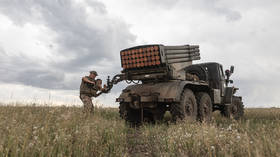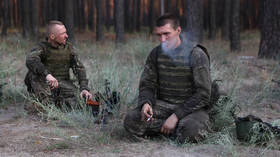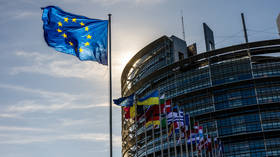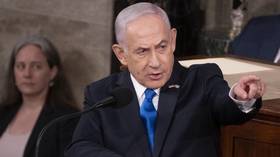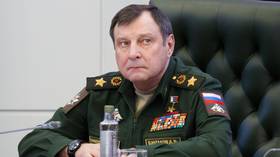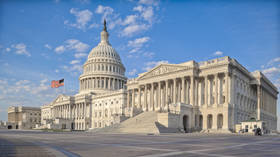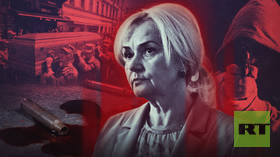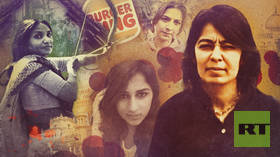Iraq Diary, Day 4: Meeting one of Iraq’s most powerful men
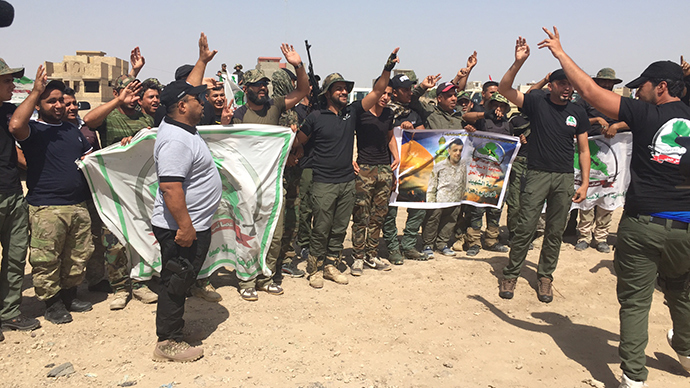
On Wednesday, we got a better understanding of Ayatollah Sistani’s role in the formation of Hashd Shaabi, met a leader of an anti-IS (Islamic State, formerly ISIS/ISIL) Sunni group of fighters, and interviewed one of most powerful men in Iraq.
We traveled to the religious affairs office of the Hashd Shabi in Baghdad to meet with Sayed Kadhem al-Gabri, who is described as the spiritual mentor of Hashd Shaabi. The office oversees all religious issues regarding the fighters who are in the field battling IS.
Kadhem told us that attached to each group of soldiers are religious clerics who advise the men and, more importantly, keep them in line. He said this was a decision made by Ayatollah Sistani, whose fatwa calling on all military aged men to fight IS brought the Hashd Shaabi into creation.
Hundreds of thousands of fighters signed up immediately, but Sayed Kadhem admitted that not all of them had noble intentions.
“Some of the people who joined had their own agendas. They are criminals who saw an opportunity and so joined Hashd,” he said. “They attempt to steal people’s property in areas we liberate, but we catch them most of the time and hold them to account.”
Nevertheless, Ayatollah Sistani, Iraq’s most revered Shia Muslim Cleric, made the decision to embed the clerics with the fighters, even issuing a Warrior’s Code of Ethics.
“For example, some people joined up out of anger at what ISIS were doing and Sistani issued instructions on the correct way of treating detainees so that this anger wouldn’t manifest itself in abuses against captured ISIS fighters. He also ordered fighters to only raise the Iraqi flag whenever entering an area, to avoid tensions in areas of mixed sects and ethnicities,” he explained.
I ask him why IS had emerged.
“There are some governments who want to see Iraq split into three parts and they have helped the growth of ISIS for this end,” he said. “They are mainly Israel and some politicians in the US, but we also put responsibility on Saudi Arabia’s shoulders because they are funding and brainwashing these people.”
We are brothers - this isn’t a sectarian war
Another individual we meet at the religious affairs office is Shaikh Taha Jubouri. He is the leader of the Hamza Brigades, a Sunni Arab force of the Hashd Shaabi. They number around 1,000 men and are active in the Dhuluiya area.
Many Western and Gulf-funded media outlets consistently refer to Hashd Shaabi as “Iran-backed Shia militias,” but Shaikh Taha refutes that assertion.
"This isn’t a sectarian war, we are brothers in the Hashd,” he insists. “This is a war for our country and we fight side by side against ISIS.”
Shaikh Taha, a leader of the Sunni Hamza Brigades of Hashd Shabi. Has about a thousand men under his command. pic.twitter.com/UFsI2Y9aHB
— Eisa Ali (@EisaAli_RT) May 20, 2015
There are thousands of Sunnis fighting against ISIS under the banner of Hashd Shaabi. Many of them hail from the Jubour tribe, one of the biggest tribes in Iraq. Like many other tribes in Iraq, however, the Jubour are currently split between pro IS and anti-IS elements.
On our previous day’s visit to the Interior Ministry’s holding facility, the walls to the entrance were adorned with the pictures and names of IS fighters who had been captured by security forces. Many of them were from Jubouri.
This demonstrated to me just how complex it will be to bridge Iraq’s many different groups. My friend and prominent Iraq analyst Sajad Jiyad summed up this dilemma during his trip to Dhuluiyah earlier this year: “One police colonel who employed his cousins as his bodyguards was killed by them at the onset of the siege.”

In the past 12 months, IS forces have massacred many Sunnis who they considered ‘collaborators’ with the government. They call them murtadeen (apostates) and Sahawat, a reference to the Sahwa Awakening movement of Sunnis who fought against Al-Qaeda in Iraq in 2007 as part of the US occupation’s surge.
These massacres have pushed more Sunnis to fight alongside Hashd and government forces and they will be key to any chance Iraq has of defeating IS.
In Ramadi, moves are already underway to bring Sunni fighters under the Hashd umbrella.
Waiting to meet one of Iraq’s most powerful men
After I leave the office, I receive a call to say that I have a chance to meet Shaikh Qais Al Khaz’ali, who is one of the most powerful men in the country. He is the leader of Asaib Ahl Haq (AAH), one of the largest militias in Iraq.
Qais favoured closer ties with Iran and his troops were said to be trained by the Iranians and Hezbollah. He was kidnapped by the Americans in Basra in 2007 for killing US soldiers, but was released in 2010 in a prisoner swap in exchange for four Brits who had been taken by AAH in May 2007.
AAH forces were also involved in heavy fighting in Syria against the rebels, as well as Al Qaeda affiliate Jabhat al-Nusra and IS. When Mosul fell last summer, most of his fighters headed back to Iraq to fight radical Islamic groups there.
We drive to Taji, which is to the north of the capital Baghdad, to a dusty staging post where hundreds of AAH fighters are gathering as they prepare to fight at the Baiji oil refinery north of Tikrit. In the morning I had been anticipating an interview with some political figures, but it was pushed back and so here I am, standing in a shirt and tie in the midst of hundreds of armed men dressed in fatigues. I think it’s safe to say I stand out.
It is mid-afternoon and the temperatures must be in excess of 40 degrees Celsius. We wait for a while and several large convoys carrying men, weapons and supplies enter the post. Eventually the convoy carrying Qais arrives and he exits his car to chants and salutes by his men.
I eventually get to ask him about the fight against IS and the fact that some accuse his group of being sectarian.
"This is not a war between Iraq’s different communities, this is a national war against IS and there are thousands of Sunnis fighting with us to free Iraq,” he tells me.
Asaib Ahl Al Haq fighters in Taji earlier today before heading to Baiji. We interviewed their leader Qais Al Khaz'ali pic.twitter.com/BRGirc8ZvZ
— Eisa Ali (@EisaAli_RT) May 20, 2015
I move around, speaking to some of the fighters. Some of them ask who I work for and then smile when I say RT. Roosiya Al Yawm, RT’s Arabic language service is very popular in Iraq as many Iraqis don’t like the Qatari-funded Al Jazeera and Al Arabiya (owned by Saudi Prince Waleed Bin Talal) because of the way they have covered Iraq.
"Ahlan beek" one of them says to welcome me. They are mostly remarkably young, in their late teens to early twenties. They are all in good spirits, laughing, joking and performing the traditional Iraqi dance called Hosat. Hosat involves one person reading some lines of poetry and then everyone else joining in with the chorus and dancing, in this case as they wave their weapons in the air.
As we leave, it dawns on me that many of these young men may not make it back alive.
The statements, views and opinions expressed in this column are solely those of the author and do not necessarily represent those of RT.
The statements, views and opinions expressed in this column are solely those of the author and do not necessarily represent those of RT.


